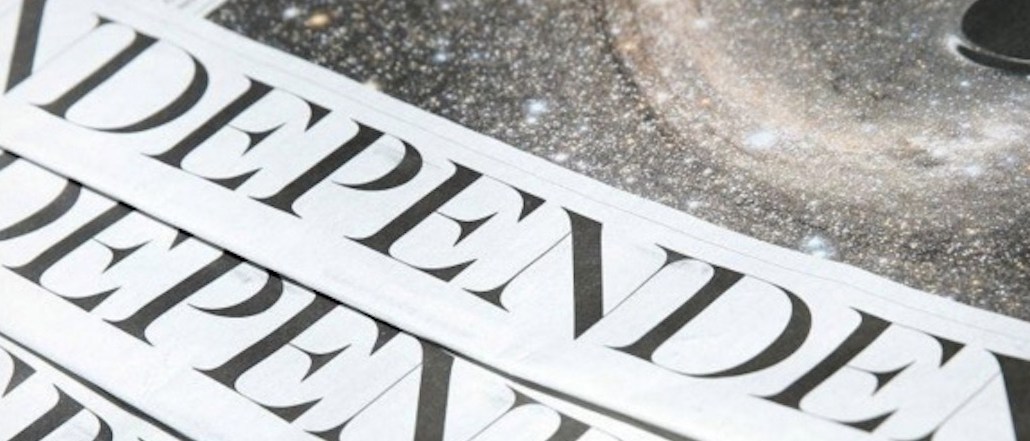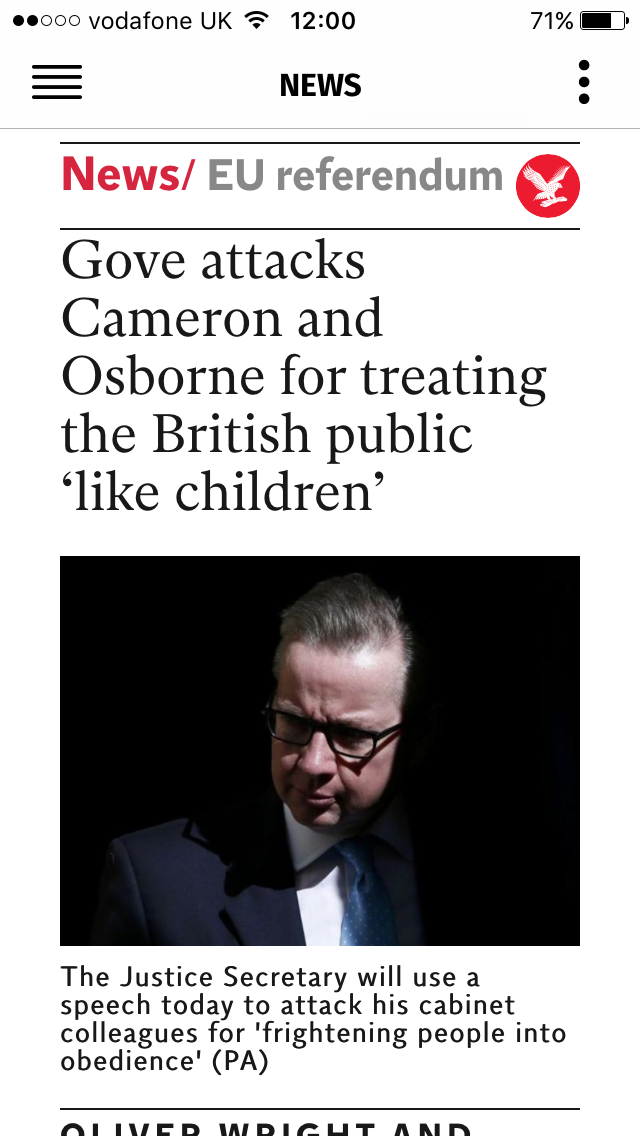Save 50% on a 3-month Digiday+ membership. Ends Dec 12.
The Independent app gets twice as many subscribers as its defunct print paper did

When The Independent halted its presses on March 26, readers had no choice but to migrate online. But parent company ESI Media wanted readers to download The Independent Daily Edition app, which launched as a so-called “virtual” alternative to the paper on Feb. 8.
According to Zach Leonard, managing director, digital at ESI Media, The Independent now has twice as many subscribers to the app as paid subscribers to the paper, thanks in part to a six-figure sum spent on marketing the app. To be sure, it was a small base to start with. The ABC puts the Independent print circulation at around 55,000, but this is for print and bulk subscriptions too. For print subscribers it is thought to be much lower at around 7,500.
This is The Independent’s first foray into the subscription model. The app is free to download, but then people must subscribe for single issue for £1.49 ($2.16), a week for £2.99 ($4.34) or a year for £149.99 ($218). It features around 100 stories a day, across sections that had previously run in the paper like news, comments, business, sport and interactive puzzles. Subscribers can customize the layout so, for example, the sports section always appears first for them. Leonard told Digiday that it’s seeing app readers spend on average 40 minutes in the app across two sessions a day. In each session, readers view, on average, half of the 100 pages.
While the app acts as an alternative destination for legacy newspaper readers, it’s also a way to get around ad-blocker users. In roughly 30 days, Leonard said it will begin testing messages that will politely ask those running ad blockers to disable their software. As of now, only 10 percent of The Independent’s inventory is blocked by ads, which is significantly lower than the U.K. average of 22 percent. The app still has ads — though still enough to be considered scarce at roughly one ad per 10 stories.
“That should reduce the 10 percent,” he said, “but if they are still looking for an ad-lite experience, then we will suggest they download the app. That’s a real leap of faith because we’re moving them from a free environment to a paid-for environment.”

Formerly, Leonard was with the Financial Times when it launched its paywall, so it has experience with subscription models. “I know instinctively that there are readers willing to engage with us, but you need to offer them significant value.”
Originally The Independent thought it could repackage content from the site to fit the app, but it quickly realized from reader feedback that it had to deliver unique content. More in-depth features are on the app as well as other sections preserved from the paper, particularly The Independent’s comment section, Voices, which features well-known columnists like Charlie Cooper and Grace Dent.
For the editors, narrowing their focus to just one platform has proven liberating. “My attention being on just this one thing has definitely benefited,” said Hannah Fearn, editor of The Independent’s comment section. Despite the growing popularity in viewing video on mobile, The Independent has held back from having any multimedia in the app for now to keep the load times down, keeping video footage just on the site.
There are more apps on the horizon for The Independent. It already has The Independent Live app, a lighter app that publishes 50 stories a day, all of which are on its website too. Keeping this meant that it wasn’t forcing these readers into the paid-for product. A daily digest app is also in the works for the next few as well as launching an app for the Indy100, the Independent’s millennial-focused site.
Update: This piece originally stated The Independent had 100,000 app downloads (based on doubling a print circulation of around 55,000 – ABC figures for print and bulk circulation). It is now understood that it’s print subscribers was roughly 7,500, according to the ABC. We regret the error.
More in Media

Meta enters AI licensing fray, striking deals with People Inc., USA Today Co. and more
The platform has secured seven multi-year deals with publishers including CNN, Fox News, People Inc., USA Today Co to incorporate their content into its large language model (LLM) Llama.

European publishers say the Digital Omnibus ‘cookie fix’ leaves them worse off
The European Union’s attempt at a legislative spring clean for Europe’s web of data privacy rules, has landed flat with publishers.

Digiday+ Research Subscription Index 2025: Subscription strategies from Bloomberg, The New York Times, Vox and others
Digiday’s third annual Subscription Index examines and measures publishers’ subscription strategies to identify common approaches and key tactics among Bloomberg, The New York Times, Vox and others.





